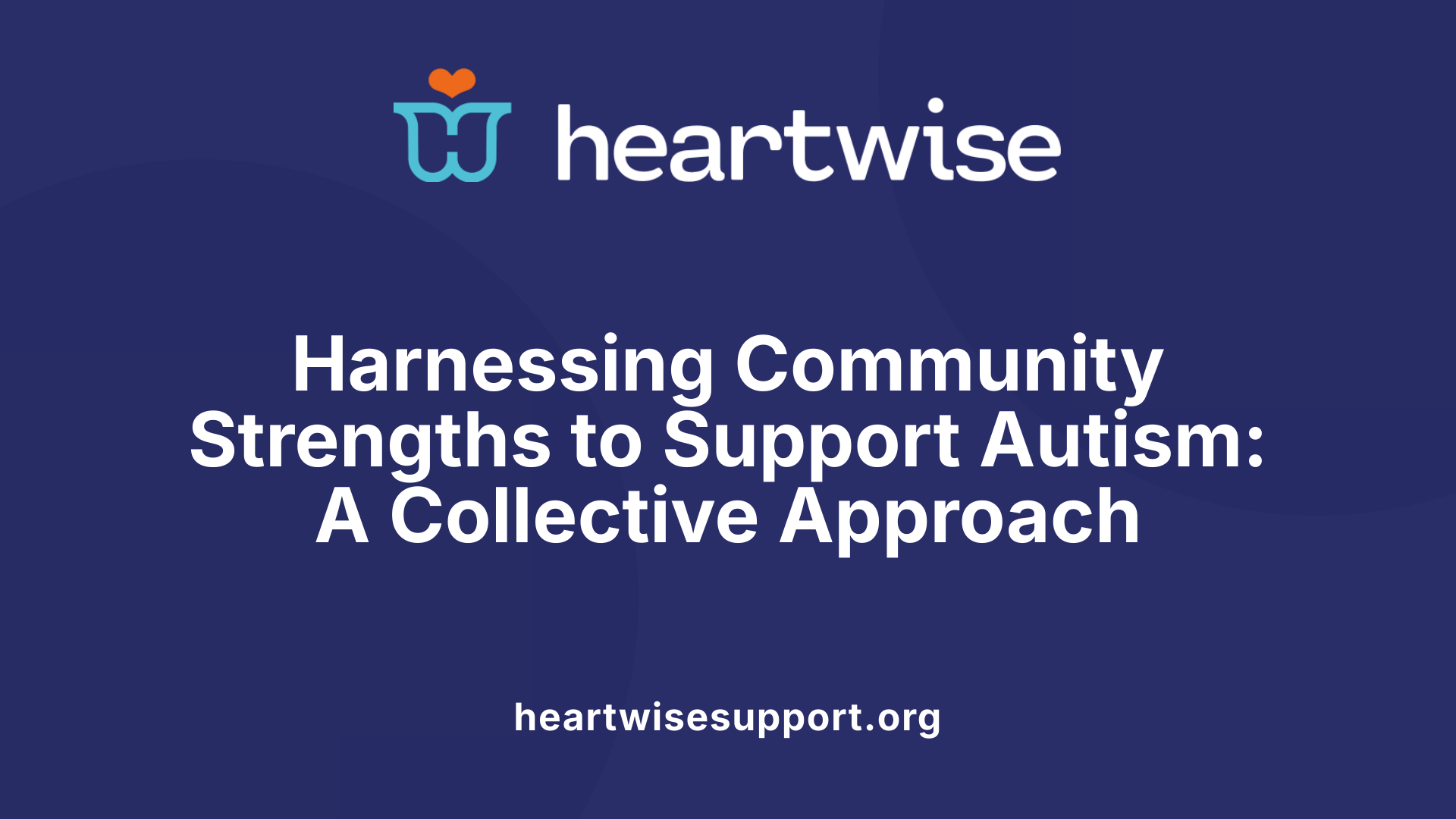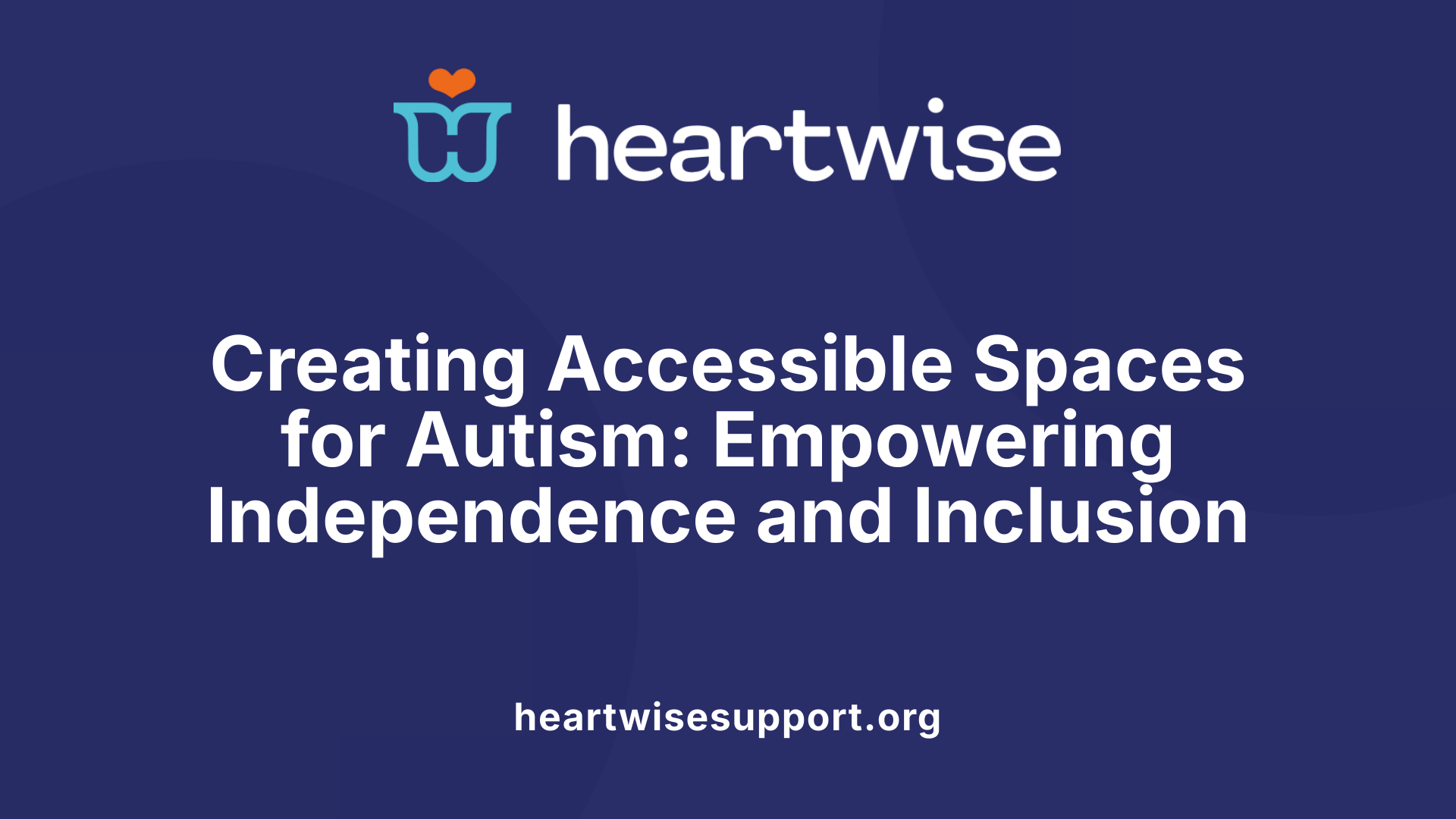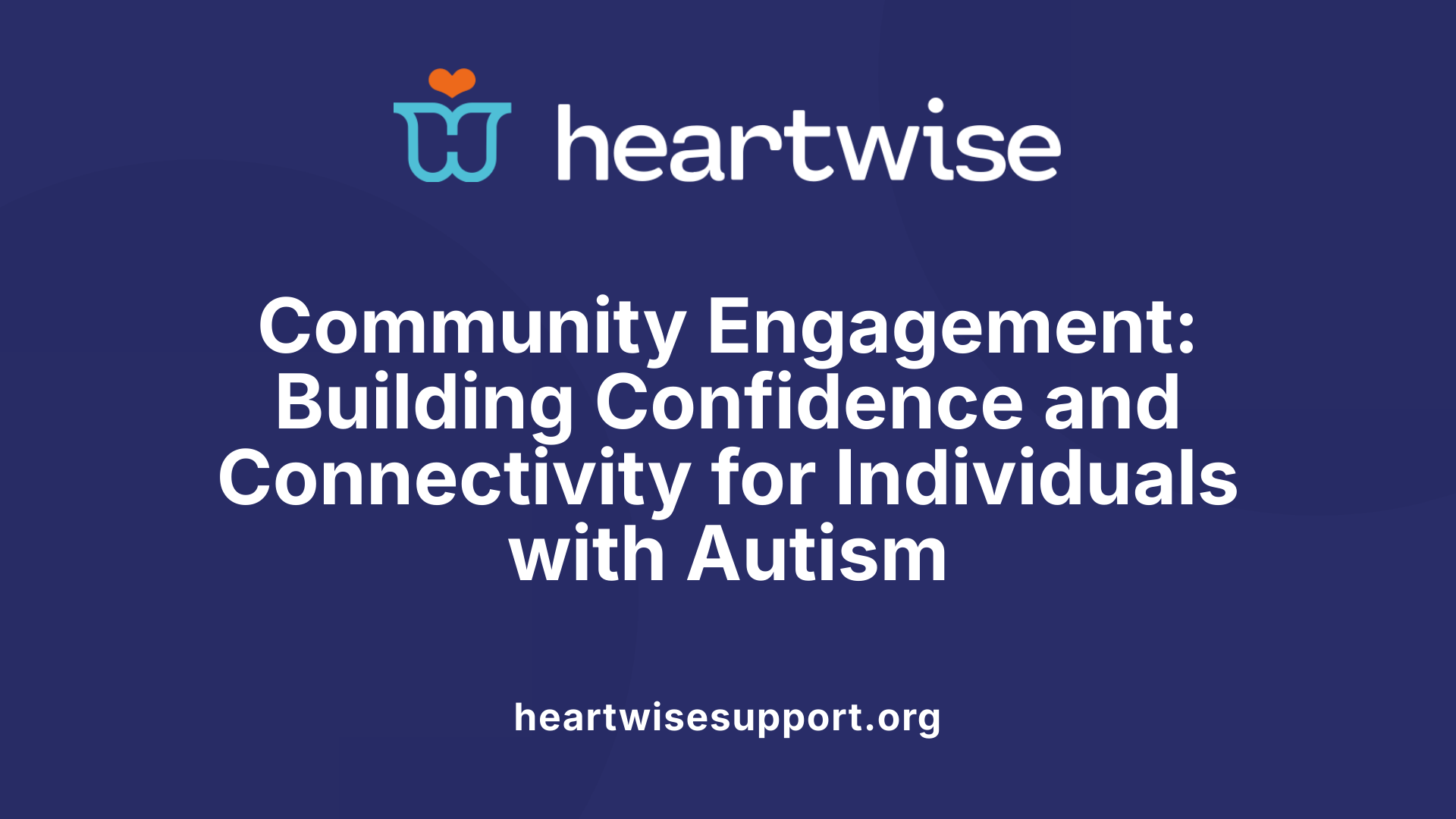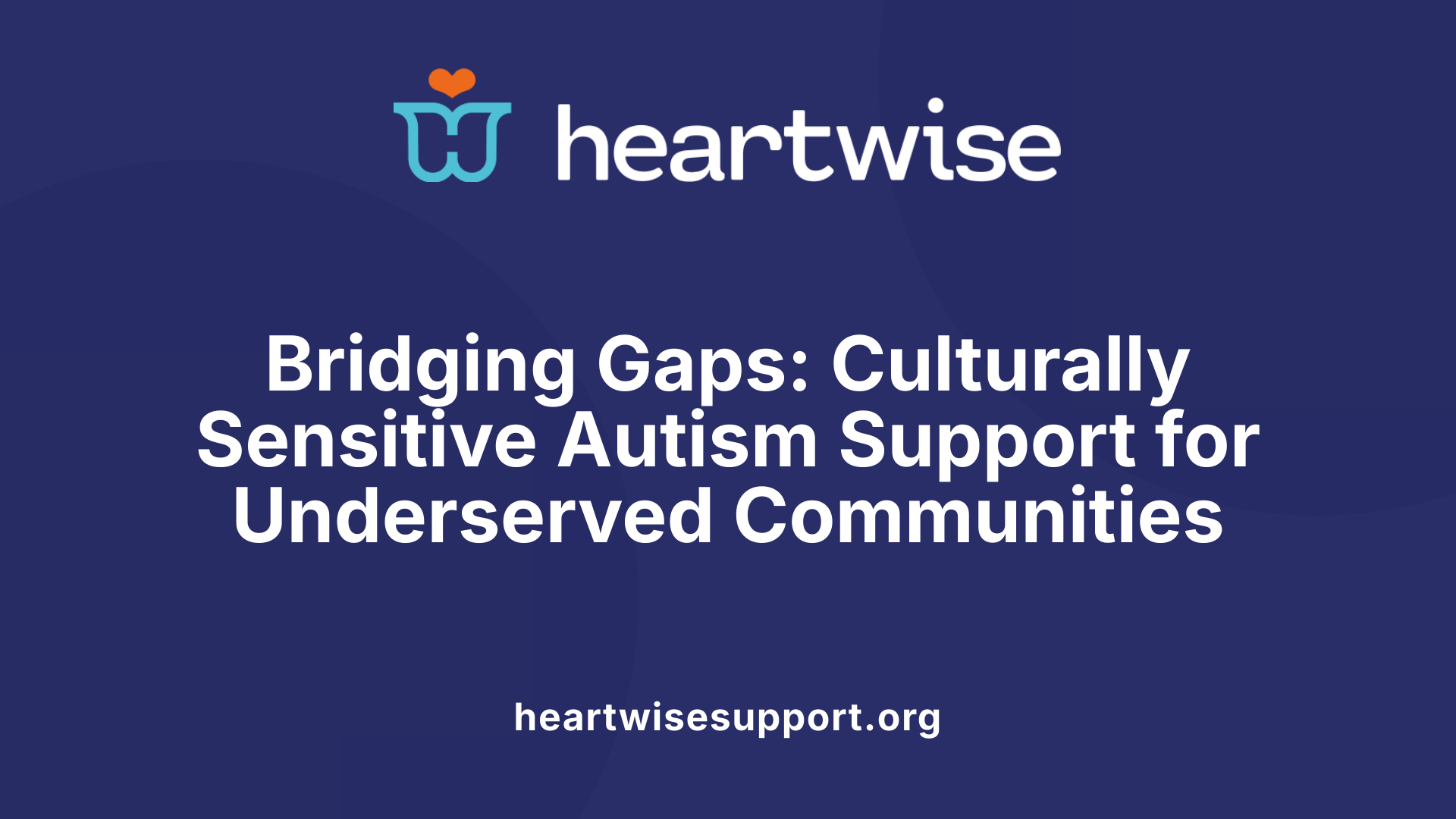Building Bridges in Autism Support Networks
Community partnerships are fundamental to enhancing the lives of individuals with autism and their families. These collaborations foster resource sharing, increase access to essential services, and promote social inclusion. By engaging diverse organizations, advocacy groups, and community members, we can develop holistic support systems that address the unique needs of autistic individuals across their lifespan. This article explores the crucial roles, strategies, and benefits of community partnerships in autism services, highlighting lessons learned from proactive collaborations during times of disruption such as the COVID-19 pandemic.
Harnessing the Power of Community Engagement in Autism Support

How can community programs support individuals with autism and their families?
Community programs are vital resources that significantly improve the lives of individuals with autism and their families. These programs offer more than just activities—they provide opportunities for social interaction, skill development, and a sense of collective belonging.
Social skills groups, recreational activities, and inclusive community events serve as platforms where individuals with autism can practice communication and social skills in a supportive environment. These settings help foster peer connections, which are essential for emotional development and reducing feelings of isolation.
Moreover, community involvement offers families a network of shared support and knowledge. Connecting with others who understand their experiences can alleviate stress and provide practical advice for managing daily challenges.
Research from reputable institutions, such as the Kellum Stem Cell Institute, highlights the importance of community engagement. Their focus on research and community outreach underlines how these programs contribute to better understanding, awareness, and treatment of autism.
In summary, community programs not only enhance individual skills but also promote inclusion, emotional well-being, and resilience among families. They create a foundation for a more accepting and accessible society for people with autism.
Community-Based Services as Foundations for Early and Lifelong Support
What is the role of community-based services in supporting children with autism?
Community-based services are essential in helping children with autism reach their full potential. They provide early intervention in natural, everyday settings, such as parks, grocery stores, and community centers. This approach allows children to learn and practice social, communication, and everyday life skills in real-world environments.
One of the main treatments used within community settings is Applied Behavior Analysis (ABA) therapy). Community-based ABA involves working with children directly in their local environments, helping them to generalize skills learned in therapy to everyday situations. For example, children might practice ordering food at a restaurant or crossing the street safely.
Beyond direct services, communities offer a variety of resources to support families. These include camps designed specifically for children with autism, respite care to give families a break, mental health support, and financial assistance options. Such resources help families manage challenges and improve their overall quality of life.
Addressing disparities is also a vital part of community services. Certain populations, such as children of color or those in underserved areas, often face barriers to diagnosis and access to quality care. Community programs work to reduce these gaps by increasing awareness, providing culturally sensitive support, and partnering with local organizations.
In sum, community-based services play a critical role in fostering social inclusion, independence, resilience, and support for children with autism and their families throughout their lives.
The Critical Role of Accessibility and Supportive Environments

Why is access to supportive facilities and services important for autistic individuals?
Providing access to appropriate facilities and services is vital for the well-being and integration of autistic individuals into society. Since autism Spectrum Disorder (ASD) presents a wide array of support needs—from full-time care to assistance with everyday tasks—tailored services enable these individuals to lead more independent and fulfilling lives.
Supportive environments help with managing communication differences, sensory sensitivities, and co-occurring conditions such as learning disabilities. These adaptations are essential in various settings like schools, workplaces, and healthcare facilities, ensuring everyone’s needs are acknowledged and addressed.
In addition, accessible facilities play a significant role in reducing societal barriers. They foster inclusion by creating welcoming spaces that encourage participation in community activities, employment, and social interactions. This not only promotes acceptance but also enhances understanding, showcasing the diversity within the autistic community.
Overall, when facilities and services are designed with accessibility in mind, autistic individuals are empowered to reach their full potential. This leads to improved quality of life, greater independence, and stronger community integration.
| Aspect | How It Supports Autism | Importance | Example Applications |
|---|---|---|---|
| Accessibility of Facilities | Ensures all individuals can use spaces comfortably | Fundamental for independence and participation | Sensory-friendly classrooms, accessible public transport |
| Support for Diverse Needs | Addresses a wide range of support requirements | Enables full societal involvement | Customized communication tools, sensory accommodations |
| Reducing Barriers | Minimizes social and physical obstacles | Fosters social inclusion and acceptance | Inclusive community programs, public awareness campaigns |
Partnerships with Autistic Individuals as Central to Effective Support
Why is it important to work in partnership with autistic individuals and others?
Collaborating directly with autistic individuals and their families is vital for creating effective, respectful support systems. When autistic self-advocates participate as equal partners in research and services, their voices help to shape programs that truly meet their needs.
Research approaches like Community-Based Participatory Research (CBPR) emphasize working side-by-side with autistic adults. This method respects their culture, priorities, and needs, ensuring that services are relevant and personalized.
Building strong, inclusive partnerships involves strategies such as using internet-based communication, structured decision-making, and making accommodations for remote collaboration. Such methods make participation accessible, especially for those facing sensory sensitivities or communication barriers.
Understanding their perspectives allows service providers to tailor supports and interventions effectively. For example, organizations like AASPIRE focus on research aimed at improving the quality of life for autistic adults by including their input at every stage.
Respect for individual needs and preferences extends to family involvement, especially for children with autism. Parent participation in early intervention programs can significantly improve outcomes and reduce stress, especially when culturally tailored approaches are employed.
Culturally informed psychoeducation for diverse populations, such as Latino parents, involves delivering materials in Spanish, using cultural metaphors, and incorporating home visits. This approach helps overcome participation barriers and fosters collaborative support.
Overall, these partnership efforts lead to more relevant, respectful, and effective supports, promoting autonomy and personal growth while ensuring that services align with the true needs of the autism community.
Enhancing Support Networks through Community Collaboration
How do community collaborations benefit autism support networks and interventions?
Community collaboration plays a crucial role in expanding and strengthening support systems for individuals with autism. By fostering partnerships among families, educators, healthcare providers, community organizations, and local agencies, these collaborations create a more cohesive and resource-rich environment.
Such teamwork enables resource sharing, making services more accessible and comprehensive. For example, community-based programs can incorporate social skills training, employment support, and recreational activities tailored to the needs of those with autism. This holistic approach ensures that interventions are well-coordinated, addressing multiple facets of an individual's development and well-being.
Leadership support and specialized training are vital for overcoming obstacles like administrative hurdles and confidentiality concerns. Clear communication channels and shared protocols streamline cooperation, minimizing duplication and fostering trust among partners.
Furthermore, community networks adapt to life transitions—such as moving from school to employment or independent living—by providing consistent support and guidance. They facilitate continuous learning and development, ensuring that services evolve with the individual's needs.
Overall, community collaborations result in more accessible, personalized, and effective interventions. They promote strong social networks, improve service delivery, and create inclusive environments that benefit individuals with autism throughout their lives.
| Aspect | Benefits | Details |
|---|---|---|
| Resource Sharing | Increased availability of services and support materials | Access to therapies, funding, and community programs |
| Holistic, Coordinated Care | Seamless service provision across sectors | Combining medical, educational, and social services |
| Overcoming Barriers | Enhanced interagency cooperation | Addressing confidentiality and administrative hurdles |
| Support During Transitions | Consistent assistance during key life changes | Moving from childhood to adulthood, employment, housing |
By cultivating strong community partnerships, stakeholders can foster a more inclusive and effective support system. This interconnected approach strengthens the capacity to meet the diverse needs of individuals with autism, ensuring they receive the support necessary for meaningful participation and improved quality of life.
Strategies for Implementing Sustainable Community Partnerships
What strategies can be effective in implementing community partnerships in autism services?
Building strong, long-lasting community partnerships is critical for providing effective autism services. This begins with engaging a diverse range of stakeholders, including autistic individuals, their families, community organizations, educators, healthcare providers, and local policymakers. Including all voices in planning and decision-making ensures that services are tailored to the actual needs and priorities of the autism community.
A person-centered, inclusive approach is essential. This means respecting the dignity of autistic individuals, recognizing their strengths, and promoting their participation in all aspects of community life. It also involves adapting environments using structured routines, visual supports, and sensory accommodations. These strategies help create safe, predictable spaces that encourage involvement, reduce anxiety, and foster a sense of belonging.
Consistency, ongoing communication, reflection, and collaborative decision-making are vital to sustaining effective partnerships. Regular meetings and open channels for feedback allow teams to adapt services and address emerging challenges promptly. Involving autistic individuals and their families directly in planning and evaluation helps ensure that interventions remain relevant and respectful.
Furthermore, professional development focusing on autism awareness and culturally sensitive practices enhances the capability of community stakeholders. Emphasizing evidence-based approaches—such as social skills training, supported employment, and inclusive recreational activities—supports community integration.
By fostering an environment of trust, collaboration, and mutual respect, community partnerships can evolve to meet changing needs and facilitate meaningful inclusion. These strategies help build resilient networks that empower individuals with autism and enrich community life for everyone.
Community Participation Enhances Quality of Life and Fosters Growth

What benefits does community involvement bring to individuals with autism and their families?
Engaging in community activities offers a wide range of positive outcomes for individuals with autism and their families. It promotes social inclusion by providing opportunities to connect with others, build friendships, and develop communication skills in natural settings.
Participating in community events and outings helps reduce feelings of stigma and isolation. It creates a sense of belonging and acceptance, which is vital for emotional well-being. Such involvement also encourages the development of social skills and confidence through structured interactions, ultimately fostering greater independence.
Moreover, community participation strengthens family bonds as families share meaningful experiences. It can alleviate stress by providing support networks, including local organizations and advocacy groups that offer resources, emotional support, and practical assistance like respite care and transportation.
Advocacy efforts at the community level raise awareness and promote inclusive policies, helping to create an environment where individuals with autism can thrive. Overall, active engagement in the community improves quality of life, enhances personal growth, and facilitates ongoing integration into broader society.
How does community participation support social skills and confidence?
Through participation in various activities such as social skills groups, recreational outings, or community-based instructions (CBI), individuals with autism practice essential skills in authentic environments. These experiences build self-confidence and adaptability, providing real-world contexts for applying learned behaviors.
As they engage with peers and community members, they learn to navigate social norms, manage sensory sensitivities, and handle unexpected situations. This experiential learning contributes to increased independence and reduces the anxiety around daily interactions.
In what ways does community involvement strengthen family bonds?
Families often share activities and experiences that foster communication and mutual understanding. Attending community events together or participating in support groups creates shared memories and emotional support.
These shared experiences can also empower families to advocate more effectively for their loved ones. Family bonds are further reinforced as parents and caregivers collaborate with community organizations, learn new strategies, and celebrate milestones.
How do advocacy and empowerment influence community participation?
Advocacy initiatives work to raise awareness about autism, reduce stigma, and push for inclusive policies. When communities become more understanding and accepting, individuals with autism are more likely to participate actively.
Empowerment efforts equip families and individuals with knowledge, skills, and confidence to access resources, speak up for their needs, and take leadership roles in their communities.
By fostering an inclusive environment, advocacy and empowerment serve as catalysts for sustained community involvement, ultimately improving the life trajectories of individuals with autism and enriching the community as a whole.
| Aspect | Benefits | Supporting Strategies |
|---|---|---|
| Social Inclusion | Reduces stigma, improves acceptance, builds friendships | Community events, social skills training |
| Confidence & Development | Boosts independence, emotional well-being | Structured activities, peer interactions |
| Family & Community Bonds | Strengthens shared experiences, mutual support | Family outings, support groups |
| Advocacy & Empowerment | Promotes policy change, resource access | Awareness campaigns, leadership programs |
This interconnected approach underscores how community participation not only enhances individual well-being but also fosters a more inclusive and supportive society for everyone involved.
Supporting Underserved and Marginalized Communities in Autism Services

How can underserved communities be supported through community collaborations in autism services?
Supporting underserved communities in autism services involves creating interventions that are culturally relevant and accessible. It requires understanding the unique needs and barriers faced by these populations, such as transportation issues, language differences, and economic challenges. Building strong relationships with local community organizations, leaders, schools, and advocacy groups fosters trust and promotes community buy-in.
Partnerships with trusted community entities enable programs to reach more families and reduce stigma associated with autism. For example, collaborating with community health workers like promotoras or peer advocates can facilitate outreach and engagement. They serve as cultural brokers who understand community dynamics and can communicate in preferred languages, making services more approachable.
Expanding telehealth and remote options also plays an essential role. During times like the COVID-19 pandemic, virtual interventions helped maintain access despite physical barriers. Training providers in cultural competence and flexible service delivery ensures that interventions respect cultural values and language preferences.
Engaging families actively and involving community members in program planning empowers people, making services more responsive to local needs. Policy changes and dedicated research that focus on disparities are essential for long-term solutions. Including community voices in the development of policies and programs ensures that interventions are sustainable and effectively address the barriers faced by marginalized groups.
In summary, effective community collaboration involves building trust, cultural sensitivity, leveraging technology, and policy support to reduce disparities and foster inclusive, equitable autism services for underserved populations.
Fostering Connected Communities for a Brighter Future
Ultimately, strong community partnerships are indispensable for advancing autism services. They enable comprehensive, culturally sensitive support that adapts to individuals' changing needs, promotes inclusion, and empowers families. Lessons learned from collaborative efforts during crises such as COVID-19 illustrate the resilience and innovation possible when communities come together. Investing in these partnerships fosters not only individual growth and social integration but also a more informed, compassionate society committed to embracing neurodiversity. By prioritizing collaboration, respect, and shared goals, communities can make meaningful strides toward a future where all autistic individuals have access to the support and opportunities they deserve.
References
- Lessons From an Academic–Community Partnership With Autistic ...
- [PDF] community partnerships and autism intervention for underserved ...
- A Look at the Importance of Community Participation in Autism
- Community Supportiveness May Facilitate Participation of Children ...
- The Importance of Community-Based Instruction for Individuals with ...
- The Importance of Community Support for Families with Autism
- The Importance of Community Support for Families with Autism
- autism - Kellum Stem Cell Institute
- Varying support needs - National Autistic Society
- What is autism - National Autistic Society











